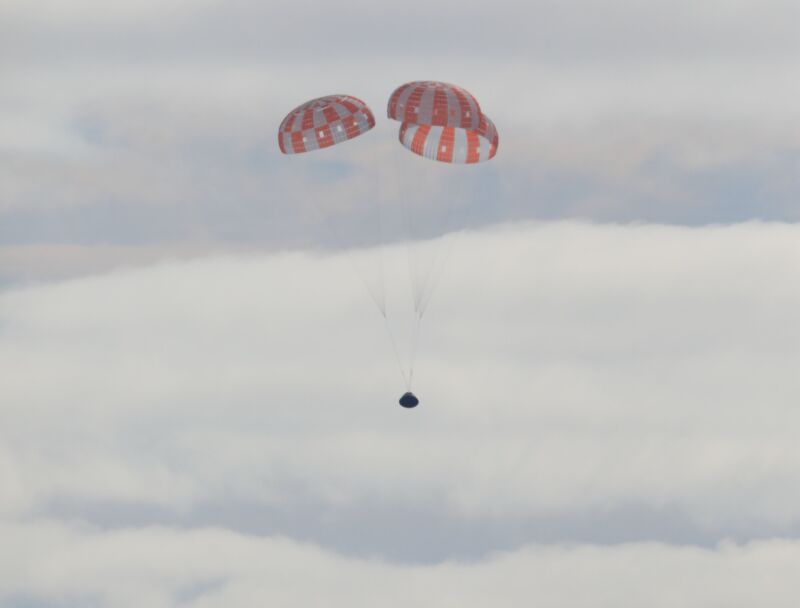NASA studying unexpected performance of Orion’s heat shield ahead of crew mission

Enlarge / NASA's Orion spacecraft descends toward the Pacific Ocean after a successful mission in December. (credit: NASA)
About three months have passed since NASA's Orion spacecraft splashed down into the Pacific Ocean after a flight beyond the Moon and back. At the time, the space agency said the Artemis I mission had successfully met its goals and paved the way for humans to follow suit.
This week, after carefully reviewing data from that Artemis I mission since splashdown, space agency officials reiterated that although there were a few minor issues with the flight, overall it bolstered confidence. As a result NASA's chief of human exploration for deep space, Jim Free, said the agency is targeting "late November" of 2024 for the Artemis II mission.
During this flight, four astronauts-likely including a Canadian-will spend a little more than a week in deep space. After checking out the performance of Orion in low-Earth orbit, the spacecraft will fly into what is known as a "free return trajectory" around the Moon, which will bring them as close as 7,500 km to the surface of the Moon before swinging back.